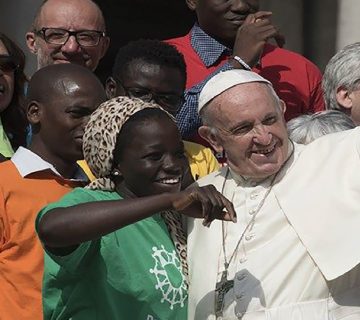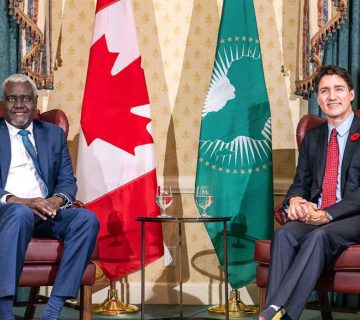The Tigray crisis in Ethiopia began when the country’s Prime Minister ordered a military operation against the region’s forces on November 4, 2020, after months of increased animosity between Tigray People’s Liberation Front (TPLF) and Ethiopia’s federal government. After weeks of fighting, (TPLF), Tigray’s political movement in command of the region’s forces was overthrown by Ethiopian forces in collaboration with the Eritrean and Amhara militia. The region’s capital, Mekelle, is now occupied by Ethiopian National Defense Force (ENDF) under an interim administration appointed by the federal government. The involvement of Eritrean forces and the Amhara militia in the conflict has further raised questions on the legitimacy, credibility, and stakes involved in the military operation turned the civil war.
Settling Old Scores
The Amhara and Tigray ethnic groups form the base of the Abyssinian Empire which created modern-day Ethiopia through southward imperial expansion. While the power rivalry between the two groups is historical, it worsened after Tigrayans, through TPLF, overthrew the communist military government of Mengistu Haile Mariam in 1991, seized power in Ethiopia, and expanded the Tigray region through the annexation of land claimed by the Amhara ethnic group.
TPLF was aided by Eritrea People’s Liberation Front (EPLF) in the rebellion against the military government, but the two sides fell out after Eritrea’s independence in 1993 as a result of disputed border territories and TPLF’s alleged secret plot to re-annex Eritrea to secure Ethiopia’s access to the Sea. The two sides went into the 1998-2000 war and spent two decades of in bilateral tensions and military aggrandizement. Ethiopia, under TPLF, rejected the ruling of the 2000 Eritrea-Ethiopia Boundary Commission to cede disputed territories to Eritrea and maintained a military occupation of the territories instead. The state of tension with Eritrea, imminent threat to territorial integrity, and military aggrandizement, made Ethiopia’s Northern Command headquartered in Mekelle and TPLF, some of the most powerful forces in Ethiopia. TPLF raided the Northern Command for weapons and forcefully co-opted the command’s soldiers, ahead of the military confrontation with ENDF.
The Ethnic Power Shift
Amharas and Eritrea might have been waiting for the downfall of TPLF. That moment arrived in 2012 with the death of TPLF-Prime Minister of Ethiopia, Meles Zenawi (who was in power between 1991 and 2012), subsequent fragmentation of the ruling coalition and Oromo anti-government protests. The Oromo who make 35 per cent of Ethiopia’s population, are the largest ethnic group, followed by the Amhara (27 per cent), Tigray (6 percent), and Somali (6 per cent). The dominance of Ethiopian politics by TPLF, an ethnic minority faction of the Ethiopia People’s Revolutionary Democratic Front (EPRDF), had fueled resentment from the largest coalition partners, the Oromo People’s Democratic Organization (OPDO) and the Amhara National Democratic Movement (ANDM). Sustained anti-government protests by Oromo in Addis Ababa, which is both the capital city of Ethiopia and the regional capital of Oromia, led to the resignation of Meles Zenawi’s handpicked successor, Haile Mariam Desalegn in April 2018.
In the course of the transition, Abiy Ahmed, an Oromo, was picked as Desalegn’s successor. He was elected the Chairman of EPRDF mainly by the OPDO and ANDM. Desalegn’s deputy, Demeke Mekonnen, forfeited his bid for the premiership in favor of deputizing Abiy Ahmed. As such, the Amhara cemented their influence and alliance with Abiy Ahmed’s premiership. Meanwhile, TPLF mounted harsh criticism of Abiy and denied him all of its 45 votes. The power shift, which brought the Oromo-Amhara alliance to power in Addis Ababa, was, however, perceived as zero-sum (and threat) to TPLF’s 27-year power structure through which Tigrayans dominated the security sector, the economy, and government. TPLF thus began resenting the ongoing political and security sector reforms as well as economic restructuring. They also opposed the Eritrea-Ethiopia peace agreement of 2018 which would cede territories to Eritrea.
The Tigray Conflict and Ethnic Targeting
The November 4, 2020 armed conflict in Tigray was not a surprise given months of mutual provocations between TPLF and the federal government. However, the participation of Eritrean military forces, Amhara military forces, and the federal government on the same side against TPLF turned the conflict into dangerous ethnic contestation. While Amhara and Eritrean forces might have been motivated by possible territorial reclamations from Tigray, as shown in the battle plan through systematic “liberation” of disputed territories and towns in Tigray from TPLF, ethnic targeting quickly became the soft underbelly. Massacres and ethnic cleansing attacks have been reported in various parts of Tigray targeting the Amhara in places such as Mai Kadra allegedly by TPLF-allied militia, and Tigrayans in Axum by Eritrean forces over 10 days. Ethnic massacres have further been reported in many other places such as Nejash, Hawzen, and Shire.
A report by the United States has revealed evidence of systematic ethnic cleansing by militias (most likely the Amhara militias) in support of the Ethiopian forces who are interested in the western territory. The report cites “severely damaged” or “completely erased” villages and “ethnic homogenization” of Western Tigray through organized force and intimidation”. The report further mentions tens of thousands of “unaccounted for the population” in certain areas of Tigray. The widespread profiling of Tigrayans by the Ethiopian public is similarly worrying as the allegations that the Ethiopian government is profiling Tigrayans and Tigrayan elites in politics, security sector, economy and business, and their families.
Risks Ahead
While there is escalating ethnic violence and acts of ethnic cleansing in Tigray, possible mass starvation might escalate the problem. In February 2021, the Ethiopian Red Cross estimated that over 80 per cent of Tigray is out of access to humanitarian assistance. Nearly 950,000 people were already food insecure before the conflict while tens of thousands face starvation, according to the interim Tigray administration. According to some reports, starvation is being used as a weapon. The international community should intensify efforts to push the conflict actors to cease violence, and allow humanitarian access as well as establish an independent investigation into possible war crimes, and ensure a peaceful settlement.
Edmond J. Pamba is a Researcher at the HORN Institute.
Photo: Ethiopian refugees from the Tigray region arrive by bus in Sudan on December 11, 2020 (Photo Credit: Yasuyoshi Chiba/AFP Via Getty Images)



